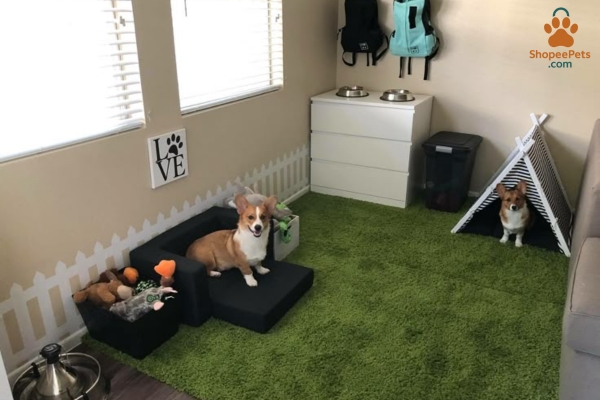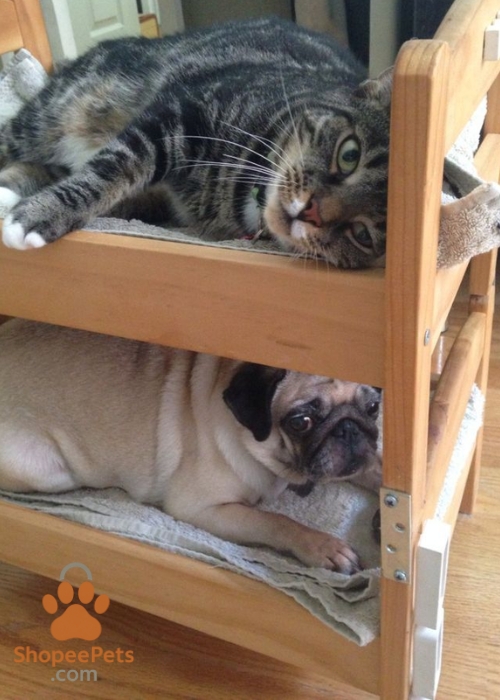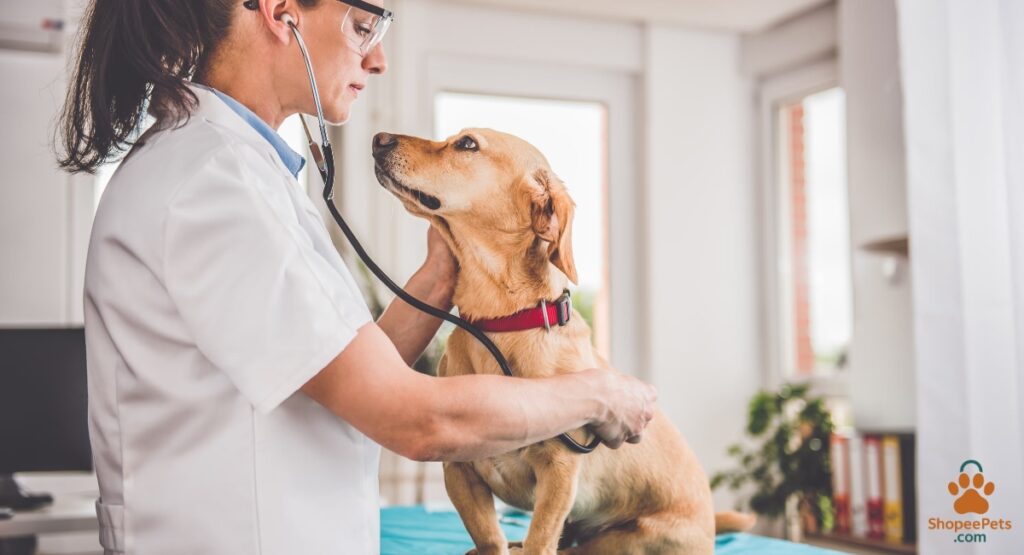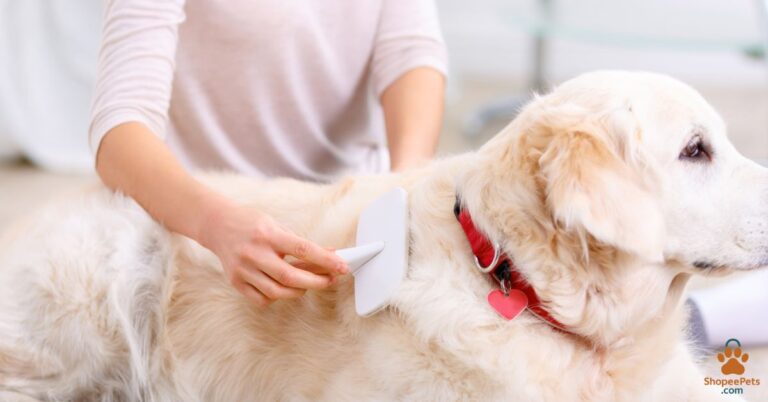How to Introduce a New Pet to Your Home
Introduction
Bringing a new pet into your home is an exciting and heartwarming experience, but it also comes with important responsibilities. Whether you are adopting a playful puppy, a curious kitten, or a rescued pet, the way you introduce a new pet to your home can determine how quickly they feel safe, loved, and comfortable. A smooth introduction not only reduces stress for your pet but also helps your family build a strong bond from the very beginning.
In this guide, we’ll walk you through proven steps, expert tips, and practical advice to make the transition easy for everyone. By the end, you’ll know exactly how to prepare your home, your family, and your existing pets for a new furry friend.
Why It’s Important to Introduce a New Pet to Your Home Properly

When a pet enters a completely new environment, everything feels unfamiliar — the smells, the sounds, and even the people. A poorly planned introduction can overwhelm them, causing fear or unwanted behavior. That’s why it’s essential to introduce a new pet to your home carefully and gradually.
Preventing Stress and Anxiety in Pets
Just like humans, pets can experience stress when faced with sudden change. If your new pet feels rushed or unsafe, it may lead to hiding, aggression, or refusal to eat. A slow introduction reduces anxiety and helps them relax faster.
Encouraging Positive Bonding
The way you introduce a new pet sets the foundation for your long-term relationship. Calm and positive interactions build trust, while stressful experiences may create lasting fear. By being patient, you allow your pet to associate your home with love, comfort, and safety.
Creating a Smooth Transition
A well-planned transition helps avoid conflicts with children, other pets, or even family routines. It ensures your new pet learns house rules gently while feeling secure. Remember, a smooth start makes training easier and creates a happy environment for everyone.
Preparing Your Home Before You Introduce a New Pet
Before you bring your new furry friend home, preparation is key. Pets feel safer when their environment is ready for them, and you’ll avoid unnecessary stress by planning in advance. Taking a few careful steps will help your pet settle faster and keep your home safe.

Pet-Proofing Your Living Space
Just like baby-proofing a house, pet-proofing prevents accidents and damage. Remove toxic plants, keep electrical cords hidden, store cleaning supplies securely, and ensure that windows and doors close properly. Creating a safe space from day one reduces risks.
Gathering Essential Supplies
Having all the basic supplies before your pet arrives ensures a smooth transition. From food bowls to cozy bedding, these essentials make your pet feel welcomed and cared for.
Essential Supplies Checklist Before Bringing a New Pet Home
| Item | Why It’s Important | Example Suggestions |
|---|---|---|
| Food & Water Bowls | Pets need their own clean bowls to avoid stress and illness | Stainless steel or ceramic bowls |
| Pet Bed/Blanket | Gives comfort and signals a safe resting spot | Soft washable bed |
| Food & Treats | Provides nutrition and positive reinforcement | Vet-approved pet food, training treats |
| Litter Box / Pee Pads | Maintains hygiene and teaches routine | Covered litter box, puppy pads |
| Crate or Carrier | Helps with travel and safe space training | Airline-approved crate |
| Toys & Chews | Keeps your pet entertained and prevents boredom | Plush toys, chew bones |
| Collar & ID Tag | Safety measure if your pet gets lost | Collar with engraved ID |
Setting Up Feeding and Sleeping Areas
Choose a quiet spot for feeding, away from heavy foot traffic, so your pet feels secure while eating. For sleeping, set up a soft bed in a calm area where they can retreat if they feel overwhelmed. Consistency in these spaces helps pets adapt quickly.
Choosing the Right Time to Bring a New Pet Home
Timing matters more than most people realize. If you bring a new pet home during a hectic period, they may struggle to adjust because of the noise, visitors, or constant changes in routine. To properly introduce a new pet to your home, you should plan for a calm and predictable environment.

- Avoid Busy Days: Don’t choose days filled with family gatherings, holidays, or parties. Too much activity can overwhelm your pet.
- Take Time Off Work (If Possible): Ideally, bring your pet home on a weekend or when you can spend a few days together. This helps you bond and monitor their behavior closely.
- Pick a Quiet Season: If your schedule allows, avoid high-stress times such as moving homes or traveling. Pets need stability when adjusting to a new place.
- Set a Routine Early: Having a feeding, walking, or playtime schedule from day one makes your pet feel safe and secure.
By bringing your pet home at the right time, you give them the best chance to relax, explore, and start trusting you without distractions.
Setting Up a Safe Space for Your New Pet
When you introduce a new pet to your home, one of the best things you can do is provide them with a dedicated safe space. This area gives them comfort, security, and a chance to adjust without feeling overwhelmed by the entire house at once.

Why a Safe Space is Crucial
New pets often feel nervous in unfamiliar surroundings. A safe space acts as their personal zone where they can relax, hide if needed, and observe the environment at their own pace. It prevents stress and builds confidence gradually.
What to Include in the Safe Area
Your pet’s safe spot should be cozy and functional. Make sure it has:
- A soft bed or blanket
- Food and water bowls
- Toys or chew items for comfort
- A litter box (for cats) or puppy pads (for dogs)
- A crate or carrier for extra security
Keep the area quiet and away from high traffic zones in your home.
How Long to Keep the Pet in Their Space
The safe space is not a permanent cage—it’s just a temporary comfort zone. Most pets only need a few days to a couple of weeks before they’re ready to explore more freely. Watch your pet’s body language. If they seem relaxed and curious, you can slowly allow them into other parts of the house.
How to Introduce a New Pet to Your Family Members
Bringing a pet home is exciting for the entire household, but it’s important that the introduction is done calmly and carefully. The way you introduce a new pet to your home and family will shape how comfortable the pet feels in the long run.
Start Slowly:
When you first bring your pet inside, limit the number of people who interact with them. Too many hands reaching out at once can overwhelm them. Begin with one or two family members and expand gradually.
Stay Calm and Gentle:
Pets can sense excitement, fear, and nervousness. Ask family members to sit quietly and let the pet approach them on their own terms. Avoid loud voices, sudden movements, or crowding around the animal.
Use Treats to Create Positive Associations:
Give each family member small treats to offer the pet. This builds trust and helps your new companion see family members as safe and friendly.
Respect the Pet’s Boundaries:
If your pet hides, growls, or pulls back, don’t force interaction. Allow them to take breaks and return when they feel ready. Remember, patience is key.
By following these steps, your pet will learn that every member of the household is a source of comfort, not stress. Over time, this creates a loving bond between the pet and the entire family.
Introducing a New Pet to Children Safely

Children are often the most excited when a new pet arrives, but they also need clear guidance. Without proper supervision, kids may unintentionally scare or stress the pet. To safely introduce a new pet to your home and children, it’s important to create a calm and respectful environment.
Teaching Children to Approach Gently
Explain to kids that pets are living beings with feelings. Show them how to slowly extend a hand for the pet to sniff instead of rushing to hug or grab. Encourage soft voices and gentle touches to make the pet feel secure.
Setting Boundaries Between Kids and Pets
Clear rules help both the child and the pet adjust. For example:
- No pulling tails or ears
- Don’t wake the pet while they’re sleeping
- Always wash hands after playing with the pet
Boundaries create safety for both sides and teach kids responsibility.
Supervising Early Interactions
Never leave young children alone with a new pet during the first few weeks. Supervision allows you to correct unsafe behavior quickly and protect both your child and the pet. Over time, once trust builds, interactions can become more relaxed.
By teaching children patience and respect, you set the stage for a lifelong friendship between them and your new furry family member.
Step-by-Step Guide to Introducing a New Pet to Other Pets
If you already have pets at home, the introduction process becomes more delicate. Resident pets often feel territorial, and your new pet may be nervous about meeting them. To successfully introduce a new pet to your home, patience and gradual steps are key.

First Meeting Through Smell
Before letting pets meet face-to-face, allow them to smell each other’s scent. Swap blankets, toys, or bedding between them. This creates familiarity and reduces anxiety when they finally meet.
Controlled Face-to-Face Introduction
Start the first visual meeting in a neutral space—like a backyard or quiet room. Keep both pets on a leash (for dogs) or in a carrier (for cats) to maintain control. Keep the interaction short and calm.
Monitoring Playtime and Interactions
Gradually increase the time pets spend together, but always monitor their behavior. Look out for signs of stress such as growling, hissing, raised fur, or stiff posture. If tension rises, separate them and try again later.
Comparison of Introducing Cats vs Dogs to Each Other
| Aspect | Dogs Meeting Dogs | Cats Meeting Cats | Cat Meeting Dog |
|---|---|---|---|
| First Step | Walk together on leash | Exchange scents first | Keep dog leashed, cat in safe space |
| Ideal Environment | Neutral outdoor space | Quiet indoor room | Quiet room with hiding spots for cat |
| Duration | Short sessions, increase gradually | Very slow, may take weeks | Start with short, supervised visits |
| Common Mistakes | Forcing play too soon | Direct face-to-face meeting | Allowing dog to chase cat |
| Signs of Success | Relaxed tails, playful bows | Grooming or sitting near each other | Dog ignores cat, cat explores confidently |
With slow and positive introductions, pets learn to accept each other and may even develop strong bonds. Remember—forcing interactions too quickly can damage relationships permanently.
Common Mistakes to Avoid When You Introduce a New Pet to Your Home

Even the most loving pet owners sometimes make mistakes during the introduction process. These mistakes can cause stress, delay bonding, or even lead to long-term behavioral problems. By knowing what to avoid, you can make the transition smoother and happier for everyone.
Forcing Interaction Too Quickly
Many owners want their new pet to immediately play with kids or other pets. But rushing the process often backfires. Pets need time to build trust at their own pace. Forcing contact can create fear instead of comfort.
Ignoring Signs of Stress
Pets show clear body language when they feel overwhelmed—such as hiding, growling, flattening their ears, or avoiding eye contact. Ignoring these signals can make your pet associate the home with fear. Always slow down when you notice stress.
Changing the Pet’s Routine Abruptly
A new home already brings big changes. If you constantly shift feeding times, sleeping areas, or interaction rules, your pet may feel insecure. Stick to a steady schedule to help them adjust faster.
By avoiding these common mistakes, you’ll ensure that the way you introduce a new pet to your home builds confidence instead of anxiety.
Using Positive Reinforcement to Help a New Pet Adjust
When you introduce a new pet to your home, one of the most effective training methods you can use is positive reinforcement. Instead of punishing unwanted behavior, you reward good behavior—helping your pet understand what makes you happy. This approach builds trust and confidence.

How to Use Positive Reinforcement:
- Treats as Rewards: Offer small, healthy treats when your pet shows calm or desired behavior, such as using the litter box, sitting quietly, or coming when called.
- Praise and Affection: Simple words like “good boy” or “good girl,” along with gentle petting, reassure your pet that they are doing the right thing.
- Use Toys and Playtime: Some pets respond better to toys or play instead of food. A quick game after good behavior can work wonders.
- Consistency Matters: Everyone in the household should use the same commands and rewards. This avoids confusion and speeds up learning.
Positive reinforcement not only teaches your pet the house rules but also strengthens your bond. Instead of fearing mistakes, your pet learns to feel safe and confident in their new home.
Feeding Tips When You Introduce a New Pet to Your Home
A good diet and proper feeding routine play a huge role in how well your new pet adjusts. The first few days are especially important because changes in food or schedule can cause stress or stomach issues.
Feeding New Pets Separately
If you already have pets at home, always feed the new pet in a separate space. This prevents fights over food and allows your new pet to eat without fear. Over time, once they’re comfortable, you can slowly introduce shared feeding spaces.
Gradual Food Transition
If you plan to switch your new pet to a different brand of food, do it gradually. Mix small amounts of the new food with their current food over 7–10 days. This prevents stomach upsets and helps your pet adjust to the new taste.
Establishing a Consistent Routine
Feed your pet at the same time every day. Consistency builds trust and helps your pet settle into the household rhythm. Pets feel more secure when they know when to expect food.
Sample Feeding Schedule for New Pets
| Pet Type | Age | Feeding Frequency | Notes |
|---|---|---|---|
| Puppy | 2–6 months | 3–4 times per day | Use high-quality puppy food |
| Adult Dog | 1 year+ | 2 times per day | Maintain consistent timing |
| Kitten | 2–6 months | 3–4 times per day | Small meals, rich in protein |
| Adult Cat | 1 year+ | 2 times per day | Provide fresh water at all times |
By following these feeding tips, you’ll make it much easier to introduce a new pet to your home and avoid unnecessary health or behavior issues.
Signs Your New Pet Is Stressed (and How to Help)
When you introduce a new pet to your home, it’s natural for them to feel a little nervous at first. However, stress can become a serious issue if it isn’t recognized and managed quickly. Pets express anxiety in many ways—some are obvious, while others are subtle. Learning to identify these signs early will help you step in and provide comfort before stress turns into long-term behavioral or health problems.
Behavioral Signs of Stress
Behavior is usually the first area where stress shows up. If your new pet acts differently than expected, it’s often their way of telling you they feel uneasy.
- Hiding or Avoidance: Many cats and some dogs will retreat under furniture, behind curtains, or into quiet corners when they’re anxious. If your new pet disappears often, it’s not just shyness—it may be stress.
- Excessive Barking, Meowing, or Whining: Vocal pets often use sound to communicate discomfort. If your new pet constantly whines, growls, or meows, it could mean they feel insecure.
- Aggression or Over-Defensiveness: Growling, snapping, or hissing at family members or other pets may indicate fear, not bad behavior. Forcing interaction in this stage usually makes things worse.
- Destructive Behavior: Chewing furniture, scratching walls, or digging excessively are often stress outlets. It’s your pet’s way of releasing nervous energy when they don’t know what else to do.
Physical Symptoms to Watch For
Stress doesn’t only affect emotions—it can take a physical toll as well. Paying attention to these signs can help you spot problems before they become severe.
- Changes in Appetite: A new pet may skip meals for a day, but ongoing refusal to eat is a red flag for stress. On the other hand, some pets may overeat as a coping mechanism.
- Digestive Issues: Vomiting, diarrhea, or constipation often occur when pets are anxious. Always rule out medical issues with a vet, but stress can be a strong factor.
- Excessive Grooming or Shedding: Cats, in particular, may lick themselves excessively when nervous, while dogs might shed more than usual. This repetitive behavior signals anxiety.
- Panting, Trembling, or Restlessness: Dogs may pace the room, pant heavily, or tremble when stressed. Cats may flatten their ears, flick their tails rapidly, or crouch low to the ground.
Ways to Calm a Stressed Pet
The good news is that stress in pets can be managed with patience, structure, and love. Here are proven methods to help your new companion feel at ease:
- Create a Safe Space: Give your pet a quiet area where they can retreat when overwhelmed. This could be a crate for dogs or a small room for cats.
- Stick to a Routine: Feeding, playtime, and bathroom breaks should follow a predictable schedule. Pets feel safer when they know what to expect each day.
- Use Positive Reinforcement: Reward calm behavior with treats, gentle praise, or a favorite toy. This helps them associate new experiences with positive outcomes.
- Provide Gentle Socialization: Gradually introduce family members, children, and other pets instead of rushing contact. Slow, supervised interactions reduce fear.
- Play and Exercise: Physical activity releases tension. Walks, play sessions, or puzzle toys can distract pets from stress and build confidence.
- Stay Calm Yourself: Pets mirror human emotions. If you’re anxious, they’ll pick up on it. Speak in soft tones and move slowly to show them they’re safe.
- Seek Professional Help if Needed: If stress signs persist, consult a veterinarian or a professional trainer. Sometimes anxiety is linked to deeper behavioral or medical issues.
Why Managing Stress Matters
Ignoring stress signs when you introduce a new pet to your home can delay bonding and even create long-lasting fear or aggression. On the other hand, recognizing these signals early and addressing them shows your pet that you are a safe, dependable caregiver. This builds the trust that is essential for a healthy and loving relationship.
How Long Does It Take a New Pet to Adjust to a Home?
One of the most common questions pet owners ask is: “How long will it take for my new pet to feel comfortable?” The truth is, there’s no single answer—it depends on the type of pet, their background, personality, and how you introduce a new pet to your home. Some pets settle in within days, while others may take weeks or even months. Understanding these timeframes helps you stay patient and supportive.
The First 3 Days: The Adjustment Shock
In the first 72 hours, most pets experience what many trainers call “adjustment shock.”
- Behavior: They may hide, refuse food, or seem unusually quiet. Some pets might even act hyperactive due to nervous energy.
- What They Need: During this time, keep things calm and predictable. Don’t overwhelm them with too many new experiences or visitors. Allow your pet to explore their new space slowly at their own pace.
- Your Role: Speak softly, offer gentle affection, and make sure they have access to food, water, and a safe space. Don’t expect bonding right away—this is the “getting to know you” phase.
The First 3 Weeks: Settling into Routine
By the second or third week, most pets begin recognizing household patterns.
- Behavior: You’ll likely notice them coming out of hiding more often, responding to your voice, and showing interest in play. Dogs may start following you around, while cats may venture out more confidently.
- What They Need: Structure becomes essential here. Keep feeding, bathroom breaks, and playtime consistent. Introduce rules gently but firmly.
- Your Role: Use positive reinforcement to reward good behavior. This is also the ideal time to start basic training for dogs or litter training reinforcement for cats.
The First 3 Months: Building Trust and Bonding
Around the 90-day mark, pets usually begin to truly feel at home.
- Behavior: They start to display their full personality—whether playful, affectionate, or independent. They’ll likely form attachments to family members and establish their “favorite spots” in the house.
- What They Need: Socialization becomes important. Slowly expose them to new people, safe outdoor experiences, or other pets in the home (if you haven’t already).
- Your Role: Focus on strengthening your bond through play, cuddling, and consistent training. At this stage, your pet should start seeing you as their safe and trusted companion.
Factors That Affect Adjustment Time
Not all pets follow the same timeline. Here are a few factors that can make adjustment faster—or slower:
- Age: Puppies and kittens usually adjust more quickly because they’re still developing social habits. Older pets may take longer to adapt.
- Background: Pets from shelters or rescue situations may need more time to overcome past trauma. Be patient if they show fear or mistrust.
- Breed and Personality: Some breeds are naturally more social and adaptable, while others are cautious or territorial. Individual personality also plays a huge role.
- Environment: A calm, structured home helps speed up adjustment. A noisy, chaotic environment can delay it.
Patience is the Key
When you introduce a new pet to your home, remember that adjustment is a process, not a race. The timeline can vary, but the effort you put in—through patience, consistency, and love—will determine how quickly your pet feels safe. Even if it takes months, the reward of seeing your pet finally relax and trust you is worth every moment.
Building Trust with Your New Pet in the First Week
The first week after you introduce a new pet to your home is one of the most critical periods in shaping your long-term relationship. This is the time when your pet is trying to figure out whether they can trust you, whether the new environment is safe, and what the household rules are. Building trust early on sets the foundation for a happy and secure bond.
Many pet owners make the mistake of expecting instant love and affection, but just like people, pets need time to feel comfortable. By focusing on trust-building activities, you can make this first week a positive experience for both of you.
Day 1–2: Let Them Set the Pace
When you first bring your pet home, their senses are on high alert. Everything smells, looks, and sounds different.
- Give Space: Allow them to explore their safe area without constantly trying to pet or hold them. Some pets may want to hide for a while, and that’s okay.
- Observe, Don’t Overwhelm: Watch how they behave and note what seems to scare them or interest them. The goal is to let them know they’re in control of their pace.
- Offer Comfort: Leave water, food, and bedding nearby. Sit quietly near them without forcing contact so they associate your presence with calmness.
Day 3–4: Start Gentle Interaction
Once your pet starts showing curiosity, it’s time to slowly build interaction.
- Use Treats as Trust-Builders: Hold out a small treat in your palm and let your pet come to you. Don’t chase them; instead, allow them to approach when ready.
- Introduce Playtime: Use toys to create positive interactions. For dogs, this might mean a gentle tug toy or fetch. For cats, a feather wand or laser pointer works well.
- Soft Communication: Speak in a calm, friendly tone. Avoid loud voices or sudden movements that could scare them.
Day 5–7: Build Routine and Bonding
By the end of the week, your pet will likely start recognizing you as part of their safe environment.
- Create Predictability: Feed and walk (if it’s a dog) at the same times each day. Cats also thrive on routine with play and feeding schedules.
- Cuddle, but Respect Boundaries: Some pets will want affection quickly, while others still need space. Respect their comfort levels, but reward any approach with gentle praise or petting.
- Positive Reinforcement Training: Begin simple commands like “sit” or “come” for dogs, or litter box encouragement for cats. This not only teaches good habits but also strengthens the bond of trust.
Additional Tips for Trust-Building in Week One
- Be Patient with Setbacks: Accidents or nervous behavior are normal. Avoid scolding—redirect behavior gently and encourage good habits instead.
- Use Consistent Signals: Pets understand routines and signals. Use the same words for commands and the same location for food or litter boxes.
- Stay Calm and Present: Your body language matters. Pets sense energy, so being calm and steady reassures them.
Why the First Week Matters So Much
When you introduce a new pet to your home, the first week is like the “first impression” period. If your pet feels safe, cared for, and respected, they’ll begin forming long-term trust in you. This trust becomes the foundation for all future training, bonding, and happiness in your home.
Remember, it’s not about rushing closeness but about creating an environment where your new pet feels secure enough to let their personality shine. With love, patience, and consistency, the first week can transform your pet’s fear into confidence and connection.
Expert Tips to Successfully Introduce a New Pet to Your Home
Introducing a new pet to your home can be exciting, but it also comes with challenges. Even if you’ve had pets before, every animal is different, and what worked in the past may not always work again. That’s why it’s helpful to learn from experts—veterinarians, trainers, and behaviorists—who understand how pets adjust to new environments. Their advice can make the transition smoother and help you avoid common mistakes.
Below are expert-recommended strategies to make the process stress-free for you and your furry friend.
1. Take It Slow and Steady
One of the biggest expert recommendations is: don’t rush the process. Whether you’re bringing home a puppy, kitten, or an adopted rescue, pets need time to process their new surroundings.
- Why It Matters: Rushing introductions to family members, children, or other pets can overwhelm your new companion and lead to fear-based behavior.
- Expert Advice: Use gradual exposure. Start with a quiet room, then expand their world as they gain confidence.
2. Create a Structured Routine from Day One
Veterinarians stress the importance of routine because pets thrive on predictability.
- Feeding & Bathroom Schedule: Stick to consistent feeding times. For dogs, add regular walks or potty breaks. Cats also adjust better when mealtimes are predictable.
- Sleep & Rest: Pets need plenty of rest, especially during transitions. Avoid overstimulation in the first few days.
- Expert Advice: A predictable routine reduces stress and helps your pet learn household rules faster.
3. Use Positive Reinforcement, Not Punishment
Animal behaviorists agree: punishment damages trust, while positive reinforcement builds it.
- How It Works: Reward calm and desirable behavior with treats, toys, or praise. Ignore or redirect unwanted behavior instead of scolding.
- Expert Advice: This creates a positive association with their new environment and strengthens the bond between you and your pet.
4. Manage Interactions with Children and Other Pets
If you introduce a new pet to your home where kids or other pets live, supervised interactions are essential.
- Children: Teach kids to approach slowly, avoid sudden movements, and respect the pet’s boundaries.
- Other Pets: Keep first meetings short and controlled. Use barriers (like baby gates) or leashes to ensure safety.
- Expert Advice: Early positive experiences prevent fear or aggression later.
5. Provide Enrichment and Mental Stimulation
Boredom is one of the leading causes of stress and destructive behavior.
- Dogs: Puzzle feeders, chew toys, and daily walks stimulate their minds and bodies.
- Cats: Climbing trees, scratching posts, and interactive toys keep them engaged.
- Expert Advice: Enrichment reduces stress and makes adjustment smoother.
6. Schedule a Vet Visit Early
Experts recommend scheduling a veterinary check-up within the first week.
- Why It Matters: This ensures your new pet is healthy, vaccinated, and parasite-free. It also gives you a chance to discuss diet, training, and behavior concerns with a professional.
- Expert Advice: A healthy start helps your pet feel comfortable in their new home and prevents future complications.
7. Be Patient and Consistent
Perhaps the most universal piece of expert advice is simple: patience. Pets don’t adjust overnight, especially rescues with traumatic pasts.
- Consistency: Stick with training methods, feeding routines, and house rules. Changing too often confuses pets.
- Expert Advice: Trust takes time, but with consistency and love, most pets settle in faster than you expect.
Why Following Expert Advice Works
When you introduce a new pet to your home, expert-backed strategies help reduce stress and increase bonding. Instead of guessing what might work, you follow proven methods that veterinarians and trainers use daily. The result? A smoother transition, fewer mistakes, and a stronger relationship built on trust.
Remember: every pet is unique, but with patience, structure, and love, your home can quickly become their forever safe place.
Final Thoughts: Making the Transition Easy for Your New Pet
Bringing a pet into your life is one of the most rewarding experiences, but it also comes with responsibility. The process of introducing a new pet to your home isn’t just about opening the door and hoping they’ll feel comfortable—it’s about creating a safe, loving, and stable environment where they can thrive. Every moment in the first days, weeks, and months counts toward building a lifelong bond of trust and affection.

Understand That Every Pet Is Different
Some pets adjust quickly, while others take longer. A playful puppy may settle in within days, but a rescued cat with a difficult past might need months before they feel truly secure. Instead of comparing timelines, focus on your pet’s individual journey. Trust builds at their pace, not yours.
👉 The key lesson? Patience is everything.
Create a Safe and Loving Environment
When you introduce a new pet to your home, think of it as preparing for a new family member. The safe space you set up, the routines you establish, and the gentle interactions you encourage all help them feel they belong.
- Provide Comfort: Cozy bedding, fresh water, and nutritious meals create security.
- Offer Stability: Routines help pets understand what to expect, reducing stress.
- Show Compassion: Even if accidents or nervous behavior happen, respond with calmness and kindness.
The Role of Positive Reinforcement
One thing all experts agree on is that positive reinforcement is the best way to build trust and encourage good behavior. Whether it’s rewarding a dog for sitting calmly, or praising a cat for using the litter box, your pet learns to associate your presence with good things. Over time, this transforms fear into trust, and hesitation into love.
Your Patience Will Pay Off
There will be challenges—chewed shoes, scratched furniture, or sleepless nights—but these are only temporary hurdles. What matters most is how you respond. With patience and consistency, these challenges become opportunities to teach, bond, and grow together.
The reward? A loyal companion who trusts you fully, sees you as their safe place, and becomes an irreplaceable part of your life.
Why This Journey Is Worth It
When you introduce a new pet to your home, you’re not just adding an animal—you’re gaining a companion, a friend, and in many ways, a family member. The effort you invest during the transition period will return to you in the form of unconditional love, joy, and loyalty.
Pets don’t just live in your home; they become a part of your heart. And once they feel safe, the bond you create is one of the purest relationships you’ll ever experience.
Final Encouragement
If you’re in the middle of this journey right now, remember: it’s okay if things don’t go perfectly. Mistakes happen, but what matters most is your willingness to keep showing up with love, patience, and consistency. Every step you take—no matter how small—brings your new pet closer to feeling safe and truly at home.
🌟 Final Thought: Introducing a new pet to your home is not a one-day task but a process of trust, care, and love. The transition may take time, but the joy of seeing your pet relaxed, happy, and thriving in their forever home makes every effort worthwhile.
Conclusion
Introducing a new pet to your home is an exciting journey filled with love, patience, and learning. From preparing your space to slowly building trust, every step plays a role in helping your new companion feel safe and welcome. The first few days may be challenging, but with consistency, positive reinforcement, and gentle care, your pet will gradually adjust and start seeing your home as their forever place.
Remember, every pet has a unique personality and timeline for adjustment. What matters most is creating a calm, structured, and loving environment that supports their needs. By following the tips and avoiding common mistakes, you’re not just easing their transition—you’re laying the foundation for a strong, lifelong bond.
At the end of the day, when you introduce a new pet to your home, you’re not simply adding an animal—you’re gaining a loyal friend and family member. And the joy, comfort, and unconditional love they bring will make every effort worthwhile.
Meta Description
Learn how to introduce a new pet to your home with expert tips, feeding advice, and step-by-step guidance. Make the transition stress-free for your pet and family.
FAQs
Q1: How long does it take for a new pet to adjust to a home?
Most pets adjust within a few weeks, but it depends on their age, personality, and past experiences. Rescue pets may take longer, so patience is key.
Q2: Should I introduce my new pet to other pets immediately?
No. Start with separate spaces and allow them to get used to each other’s scent before face-to-face meetings. Gradual introductions work best.
Q3: How do I know if my new pet is stressed?
Signs include hiding, loss of appetite, excessive grooming, or whining. Provide a safe space, maintain routines, and use positive reinforcement to ease their stress.
Q4: Can I change my new pet’s food right away?
It’s best to transition slowly over 7–10 days by mixing the old food with the new one to avoid stomach upset.
Q5: What’s the most important thing when introducing a new pet to your home?
Patience and consistency. Give them time, create routines, and use love and positive reinforcement to build trust.


Naeem – Founder, ShopeePets
Helping pet lovers choose the best with honest product reviews, practical advice, and trusted guidance for every pet owner.
Visit ShopeePets.com →





